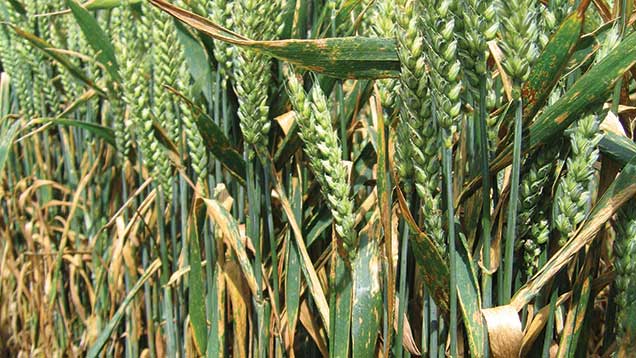What scientists have discovered about septoria resistance in wheat

Crop scientists are optimistic about breeding wheat varieties with better resistance to the crop’s biggest yield killing disease – septoria – as they search through older wheat varieties.
Some suspect that the effectiveness of the azole fungicides in the 1990s in controlling septoria may have put breeding for septoria resistance low on the plant breeders’ agenda.
Scientists at Rothamsted Research say the fungus disease is highly promiscuous and constantly changing itself, so it may take at least 10 years to get good varietal resistance.
See also: Septoria is the big disease threat to wheat this spring
“We are hopeful of getting better resistance to septoria, but it could be some way off,” says Dr Jason Rudd, who is leading Rothamsted’s project into looking for better septoria resistance.
His team has identified two wheat genes that function against septoria and one gene in the fungus that can inactivate the disease.
The septoria fungus can live on living or dead tissue, which makes it a more difficult disease to control than yellow rust, which only lives on live tissue so can be killed if infected leaves are frosted and die.
Kim Hammond-Kosack, also from Rothamsted, says older wheat varieties showed good resistance in the bad septoria year of 2008 so there is clearly potential to improve current varieties.
“It should be possible to get higher septoria resistance as there is enough genetic material around,” she says.
Most winter wheat varieties are rated 4 to 6 for resistance to Septoria tritici on current HGCA Recommended List, where 1 is very poor and 9 is good resistance, with only one variety, Cougar, on a 7 and outside that range.
“We may start to get more 7s for septoria, but to get a 9 is more ambitious,” says Prof Hammond-Kosack.

